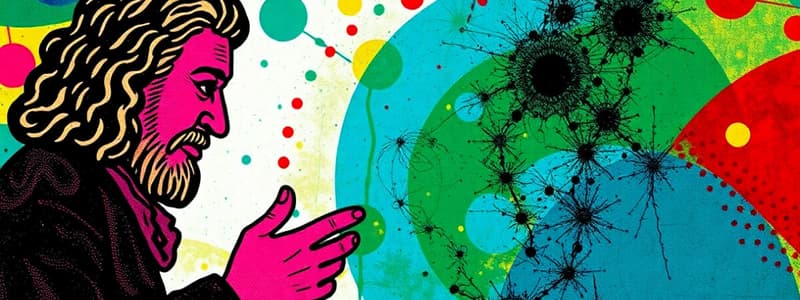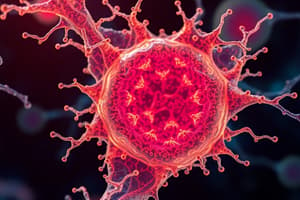Podcast
Questions and Answers
Who is credited with the invention of the compound microscope in 1664?
Who is credited with the invention of the compound microscope in 1664?
- Robert Hooke (correct)
- Louis Pasteur
- Joseph Lister
- Anton van Leeuwenhoek
What was one of the limitations of Anton van Leeuwenhoek's microscope compared to modern standards?
What was one of the limitations of Anton van Leeuwenhoek's microscope compared to modern standards?
- It was too bulky for practical use.
- It lacked the ability to illuminate samples.
- It was unable to resolve images clearly beyond a certain magnification. (correct)
- It could not magnify images at all.
Which items did Robert Hooke observe using his microscope?
Which items did Robert Hooke observe using his microscope?
- Microorganisms in soil
- Fleas, sponges, and bird feathers (correct)
- Bacteria and viruses
- Human blood cells
What is one key characteristic of Anton van Leeuwenhoek's microscope?
What is one key characteristic of Anton van Leeuwenhoek's microscope?
Which of the following statements is true regarding the microscopes invented by Hooke and van Leeuwenhoek?
Which of the following statements is true regarding the microscopes invented by Hooke and van Leeuwenhoek?
Flashcards
Robert Hooke
Robert Hooke
Invented a compound microscope that allowed him to observe tiny organisms like fleas, sponges, and plants.
Anton van Leeuwenhoek
Anton van Leeuwenhoek
Developed a microscope, simple in design, yet powerful enough to magnify objects 200 times, revealing a hidden world of microorganisms.
Microscope
Microscope
A tool that uses lenses to magnify small objects, allowing us to see things invisible to the naked eye.
Compound Microscope
Compound Microscope
Signup and view all the flashcards
Microbiology
Microbiology
Signup and view all the flashcards
Study Notes
Microscopy Inventions
- Robert Hooke, in 1664, created a compound microscope.
- He used this microscope to examine various specimens, including fleas, sponges, feathers, plants, and molds.
Leeuwenhoek's Microscope
- Anton van Leeuwenhoek designed a microscope.
- Although considered rudimentary compared to modern microscopes, it could magnify samples over 200 times.
Studying That Suits You
Use AI to generate personalized quizzes and flashcards to suit your learning preferences.



